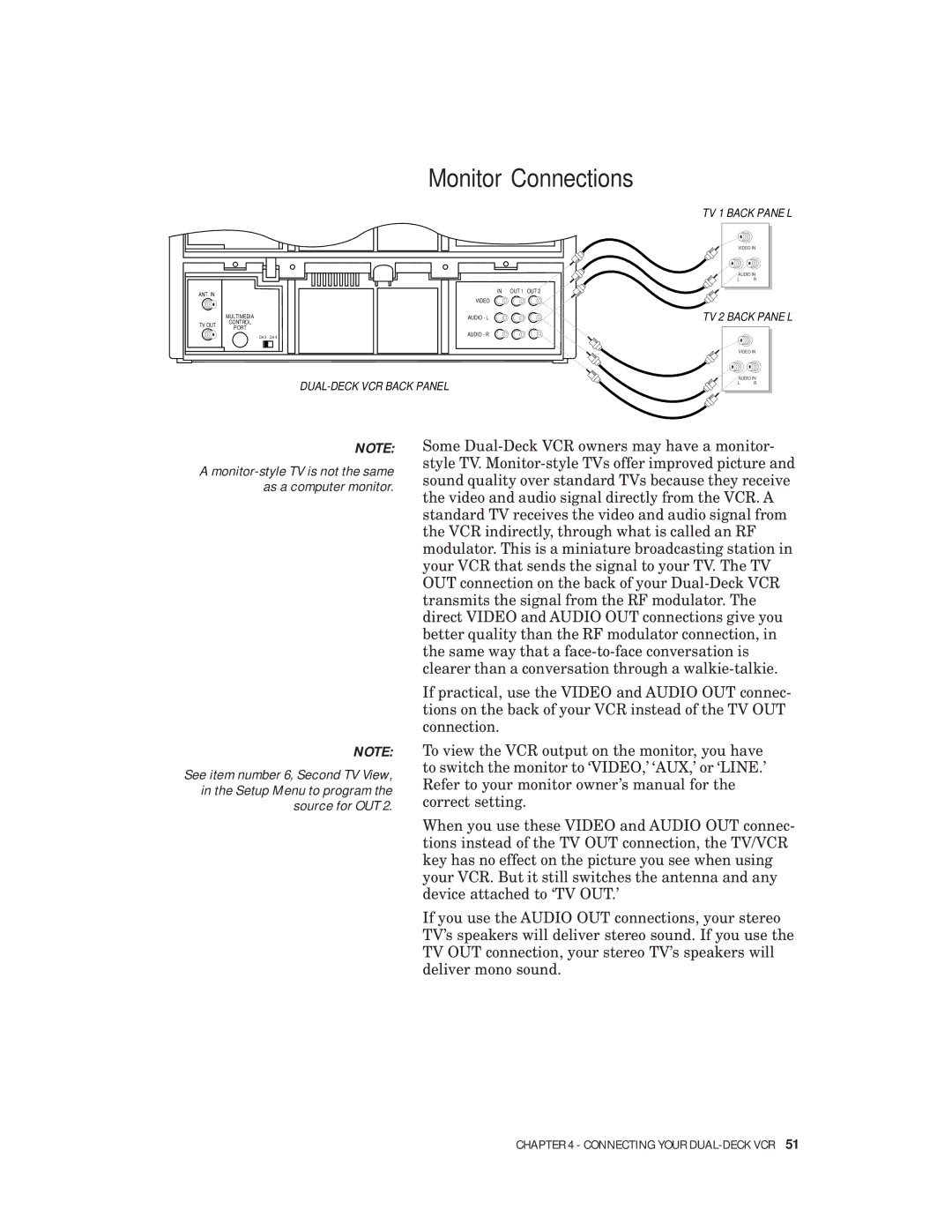
|
|
| Monitor Connections | |
|
|
|
| TV 1 BACK PANEL |
|
|
|
| VIDEO IN |
|
|
|
| AUDIO IN |
|
|
|
| L R |
ANT. IN |
|
| IN OUT 1 | OUT 2 |
|
| VIDEO |
| |
|
|
|
| |
| MULTIMEDIA |
| AUDIO - L | TV 2 BACK PANEL |
TV OUT | CONTROL |
|
|
|
PORT |
|
|
| |
|
|
|
| |
| CH 3 | CH 4 | AUDIO - R |
|
|
|
| ||
|
|
|
| VIDEO IN |
|
|
| AUDIO IN | |
|
|
| L R | |
|
|
|
| |
NOTE:
A
NOTE:
See item number 6, Second TV View, in the Setup Menu to program the source for OUT 2.
Some
If practical, use the VIDEO and AUDIO OUT connec- tions on the back of your VCR instead of the TV OUT connection.
To view the VCR output on the monitor, you have to switch the monitor to ‘VIDEO,’ ‘AUX,’ or ‘LINE.’ Refer to your monitor owner’s manual for the correct setting.
When you use these VIDEO and AUDIO OUT connec- tions instead of the TV OUT connection, the TV/VCR key has no effect on the picture you see when using your VCR. But it still switches the antenna and any device attached to ‘TV OUT.’
If you use the AUDIO OUT connections, your stereo TV’s speakers will deliver stereo sound. If you use the TV OUT connection, your stereo TV’s speakers will deliver mono sound.
CHAPTER 4 - CONNECTING YOUR
